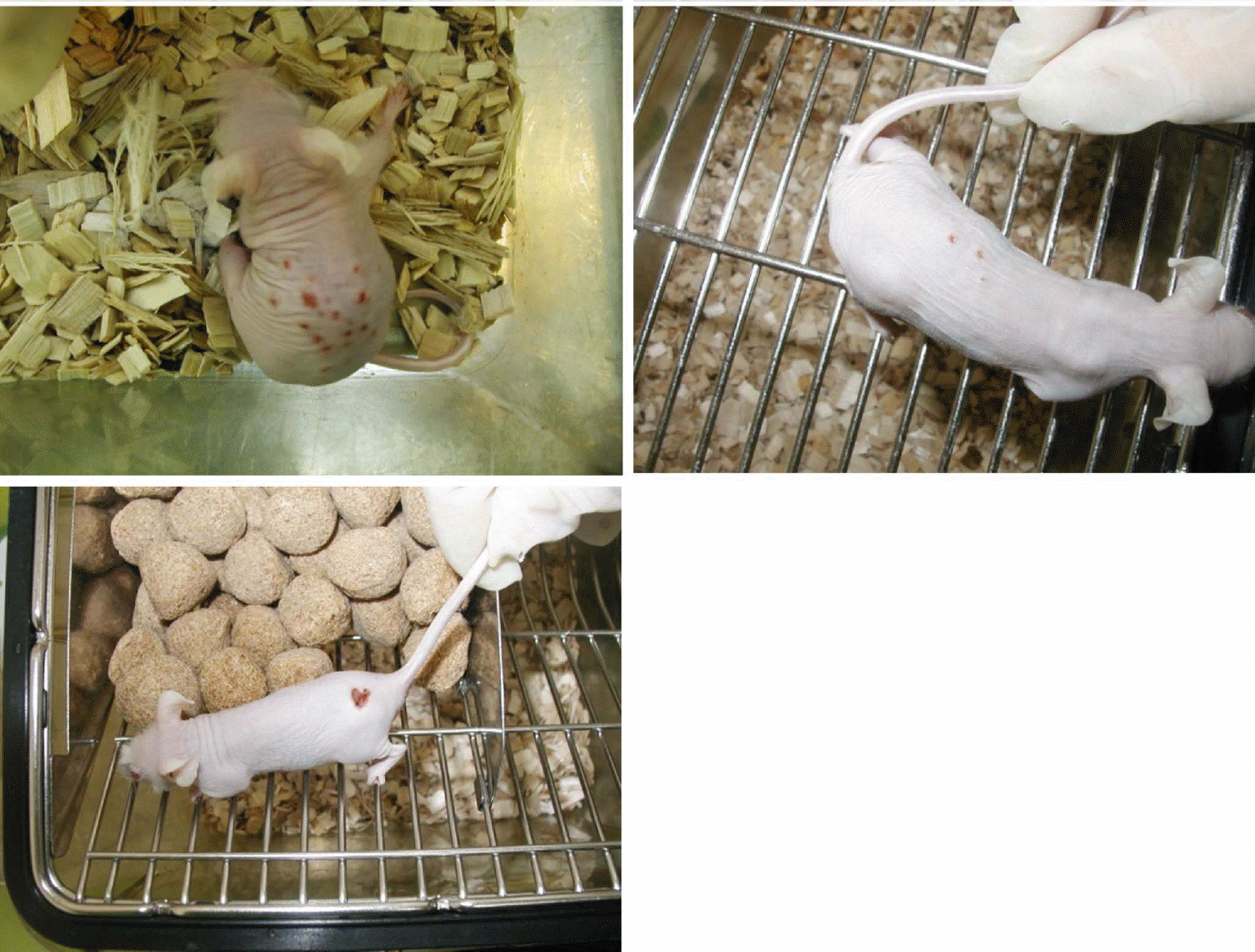Abstract
This report describes rodents in a laboratory animal facility that was adversely affected by a noisy environment during construction work. There was much noise and vibration as well as dust caused by the drilling and hammering. The noise levels, frequencies, and length of time when occurring in the drilling and hammering, were all measured. The drilling showed noise levels ranging from 50–90 decibels (dB) (A-filter, A), and the hammering presented 60–70 dB (A). Some researchers raised problems regarding animal experiments, including skin injuries resulted from self-mutilation, and increase of mortality. This gives useful information to people who plan to renovate laboratory animal facilities as it is a very rare case.
References
Carlton, D.L. and Richards, W. (. 2002. ). Affordable noise control in a laboratory animal facility. Lab. Anim. 31,. 47–48.
Milligan, S.R., Sales, G.D. and Khirnykh, K. (. 1993. ). Sound levels in rooms housing laboratory animals: an uncontrolled daily variable. Physiol. Behar. 53,. 1067–1076.
Sales, G.D., Wilson, K.J., Spencer, K.E. and Milligan, S.R. (. 1988. ). Environmental ultrasound in laboratories and animal houses: a possible cause for concern in the welfare and use of laboratory animals. Lab. Anim. 22,. 369–375.
Figure 2.
Various skin injuries caused by self-biting in nude mice (BALB/c nude, CAnN.Cg-Foxn1nu/CrlCrlj, ORIENT BIO INC). They were five weeks old when admitted to the animal facility in the middle of June. Three weeks later injuries were found on the skin of the mice. They were used as the negative control group in a study and were separately housing in each cage operating by individually ventilated cage system.

Table 1.
The number of times for different noise levels and the exposure time at a noise caused by construction tools during the renovation
| Tools | Noise levels (dB) | Time exposed (sec)# | |||
|---|---|---|---|---|---|
| 50–60 | 60–70 | 70–80 | 80–90 | ||
| Drilling | 141∗ | 775∗ | 955∗ | 25∗ | 5–10 |
| Hammering | – | 530∗ | – | – | 1 |
Table 2.
The problems of animal experiments raised by researchers
Table 3.
The health monitoring results conducted before the construction
Table 4.
The Health monitoring results conducted during the construction




 PDF
PDF ePub
ePub Citation
Citation Print
Print



 XML Download
XML Download